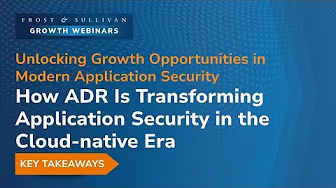
From runtime visibility and real-time threat detection to overcoming the limitations of traditional AppSec tools, this session highlights how ADR is transforming security operations in cloud-native environments.

The Definitive Playbook to Secure Vibe Coding
AI-assisted coding is here to stay, supercharging productivity in cloud-native teams. But with great power comes real security risk. This playbook gives security and engineering leaders a clear, actionable roadmap for safely integrating AI development tools—from pair-programming assistants to citizen developers—into their software lifecycle.

ISO 42001 and Its Implications on Application Security in AI Systems
This white paper explores how ISO 42001 influences application security, including adversarial threat mitigation, AI supply chain security, and model robustness. It also introduces a comprehensive audit test plan, equipping security teams with a structured approach to evaluating AI governance and security controls.

This report aims to equip readers with actionable insights that can help future-proof their security programs.
Kodem, the publisher of this report, purpose built a platform that bridges these gaps by unifying shift-left strategies with runtime monitoring and protection.
Based on qualitative and quantitative responses of industry security leaders, practitioners, developers and DevOps professional

Our new report provides an in-depth analysis of how organizations manage risks within increasingly complex software environments. Drawing from recent survey data, the report examines workflows for discovering, triaging, remediating, and governing vulnerabilities across modern infrastructures.

See How Kodem Secures Your Google Cloud Workloads
Through its integration with Google Cloud, Kodem enables proactive detection, allowing real-time scanning, analysis, and response to threats across your development lifecycle.

Skip the fluff and dive straight into our 4-minute product pitch.
Let's cut through the typical sales talk and show you exactly how our runtime application security platform exposes vulnerabilities across code, containers, and APIs. See how it empowers your team to stop complex attack chains that other tools miss.

Hear a lively discussion with de-FUD podcast hosts @Nancy Wang, Venture Partner, Felicis, and @Ashish Popli, RiskEyeQue as they chat with Aviv Mussinger about cloud security, the right way to shift left... and cake 😀

AI in Security Workflows
James Berthoty and Surag Patel, CEO of Pixee, discuss the role of AI in application security and the challenges of integrating AI into security solutions. Both emphasize the importance of understanding the problem before deciding to use AI and highlight the need for AI to be additive and specific in its application. The conversation also delves into the use of AI in baselining and the considerations for using AI in security workflows.

The Path to MLBOM
James Berthoty interviews Jacob Barkay, a product security architect at Edwards Life Sciences. They discuss the impact of large language models (LLMs) on product security, especially in regulated industries like healthcare. Jacob emphasizes the importance of ensuring the security of LLMs, transparency, and rigorous checks. He highlights the evolving nature of AI security standards and the need for data scientists to understand these risks.

Prompt Injections and Beyond
In this conversation, James Berthoty talks with Elad Shulman, CEO and co-founder of Lasso Security. Elad emphasizes the importance of understanding and mitigating risks associated with GenAI, such as data leaks, manipulation of models, prompt injections and unknown threats. They also touch on how different teams within organizations approach AI security and the evolving use cases for AI in enterprises.

Hacking with AI
Joseph Thacker, Principal AI Engineer at AppOmni, discusses how AI and LLMs can boost creativity in tasks like testing and bug bounties by offering a variety of solutions. To maximize AI's effectiveness, Joseph emphasizes the importance of providing it with extensive context, ensuring the AI tool has a clear understanding of what’s being evaluated. When applying AI to active web applications, he highlights the need for a decision-making core that can effectively process key elements such as the host, path, and other contextual information. This deeper understanding enables AI to make more accurate and informed assessments, enhancing its overall performance in cybersecurity tasks.